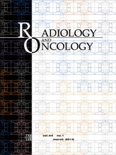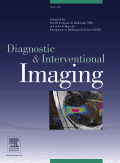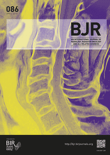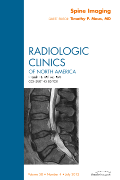
Japanese Journal of Radiology
Scope & Guideline
Exploring Innovations in Imaging and Nuclear Medicine
Introduction
Aims and Scopes
- Diagnostic Imaging Techniques:
The journal extensively covers various imaging modalities such as MRI, CT, PET, and ultrasound, focusing on their applications in diagnosing a wide range of conditions, including cancer, neurological disorders, and cardiovascular diseases. - Interventional Radiology:
Research in this area includes studies on minimally invasive procedures guided by imaging techniques, evaluating safety, efficacy, and patient outcomes in treatments for conditions such as tumors and vascular diseases. - Radiotherapy and Oncology:
The journal explores advancements in radiotherapy techniques, including stereotactic body radiotherapy and brachytherapy, along with their roles in cancer treatment and the evaluation of treatment responses. - Artificial Intelligence and Machine Learning:
There is a growing emphasis on the application of AI and machine learning in radiology, focusing on improving diagnostic accuracy, automating processes, and enhancing imaging analysis. - Radiomics and Imaging Biomarkers:
Studies related to radiomics involve extracting large amounts of features from medical images using data-characterization algorithms, aimed at predicting clinical outcomes and personalizing treatment strategies. - Cost-Effectiveness and Health Economics:
The journal includes analyses of the cost-effectiveness of various imaging modalities and interventions within the Japanese healthcare system, highlighting the importance of economic evaluations in clinical decision-making.
Trending and Emerging
- Artificial Intelligence and Deep Learning:
The integration of AI and deep learning techniques in radiology is a rapidly growing field, with numerous studies focusing on automated image analysis, diagnostic support systems, and predictive modeling. - Radiomics and Personalized Medicine:
Emerging research is increasingly exploring the use of radiomics to derive biomarkers from imaging data, facilitating personalized treatment plans and improving prognostic accuracy for cancer patients. - Advanced Imaging Techniques:
There is a notable trend towards the development and application of advanced imaging methodologies, such as photon-counting CT and high-resolution MRI, which enhance diagnostic capabilities and image quality. - Interventional Radiology Innovations:
Research focusing on innovative techniques and technologies in interventional radiology is on the rise, highlighting new approaches to minimally invasive therapies and their clinical applications. - Health Economics and Cost-Effectiveness Studies:
There is growing interest in health economics, particularly studies evaluating the cost-effectiveness of imaging modalities and interventions, reflecting the importance of economic considerations in healthcare.
Declining or Waning
- Traditional Radiographic Techniques:
There is a noticeable decrease in research focusing solely on conventional radiographic methods, as newer imaging modalities and technologies gain prominence in clinical practice. - Basic Research in Imaging Physics:
While foundational research in imaging physics remains important, the trend indicates a shift towards more applied research that directly impacts clinical outcomes rather than theoretical or purely technical studies. - General Reviews on Imaging Techniques:
The frequency of general review articles that summarize existing imaging techniques is declining, as the journal increasingly favors original research and studies that contribute new data or insights. - Non-Integrated Multimodal Approaches:
Research that does not integrate multiple imaging modalities or fails to demonstrate a synergistic use of imaging techniques is becoming less common, as the focus shifts to comprehensive, multimodal evaluations.
Similar Journals

EUROPEAN RADIOLOGY
Elevating Standards in Radiology ResearchEUROPEAN RADIOLOGY, published by SPRINGER, stands as a prestigious international journal in the field of radiology, nuclear medicine, and imaging, with an impressive impact factor that underscores its significance among peers. With an ISSN of 0938-7994 and an E-ISSN of 1432-1084, this journal provides a platform for cutting-edge research and advancements in medical imaging from 1991 to 2024. Recognized as a Q1 journal in both general Medicine and the specialized Radiology category by 2023, EUROPEAN RADIOLOGY ranks an impressive #17 out of 333 in its field according to Scopus, placing it in the 95th percentile. While it does not currently offer Open Access options, the journal remains essential reading for researchers, professionals, and students striving to stay at the forefront of developments in diagnostic imaging and related technologies. By contributing to a comprehensive understanding of radiological practices, EUROPEAN RADIOLOGY plays a crucial role in shaping the future of medical diagnosis and patient care.

Radiology and Oncology
Empowering the medical community with open access to vital discoveries.Radiology and Oncology is a prominent open access journal that has been instrumental in advancing the fields of radiology and oncology since its inception in 1992. Published by SCIENDO in Germany, this journal aims to disseminate high-quality research articles, reviews, and case studies that address critical issues in diagnostic imaging and cancer treatment. As of 2023, it holds a commendable impact factor within the Q2 category for Radiology, Nuclear Medicine, and Imaging, and a Q3 standing in the field of Oncology—reflecting its importance in these critical areas of medicine. With a focus on promoting innovative research and interdisciplinary collaboration, Radiology and Oncology is indexed in Scopus, where it ranks #122 among 333 in its category and #187 among 404 in Oncology, showcasing its wide-reaching impact and relevance. The journal is fully open access since 2007, ensuring that vital research is accessible to the global medical community and fostering advancements in patient care strategies and therapeutic methodologies. By providing a platform for the latest developments and discoveries, Radiology and Oncology is a pivotal resource for researchers, clinicians, and students dedicated to improving outcomes in cancer care through innovative imaging techniques.

ROFO-FORTSCHRITTE AUF DEM GEBIET DER RONTGENSTRAHLEN UND DER BILDGEBENDEN VERFAHREN
Pioneering Insights for Modern Diagnostic PracticesROFO-Fortschritte auf dem Gebiet der Röntgenstrahlen und der bildgebenden Verfahren, published by Georg Thieme Verlag KG, is a pivotal journal in the fields of radiology and nuclear medicine, offering invaluable insights for researchers, healthcare professionals, and students alike. With an ISSN of 1438-9029, this journal has been a stalwart of scientific communication since its inception in 1975, actively contributing to advancements in imaging techniques and radiation therapy. Although it operates under traditional access, the journal maintains a respectable standing, reflected by its Q3 ranking in Radiology, Nuclear Medicine and Imaging and Q4 in Medicine (miscellaneous), highlighting its significance in the scholarly community. Its coverage spans a wide array of topics pertinent to diagnostic imaging and therapy protocols, making it an essential resource for anyone seeking to understand the complexities of modern radiological practices. As the journal continues to evolve through 2024, it invites contributions that enrich the dialogue around technological innovations and clinical applications in the realm of imaging modalities.

Diagnostic and Interventional Imaging
Pioneering Research for Enhanced Patient CareDiagnostic and Interventional Imaging, published by Elsevier Masson, stands as a prominent journal in the fields of Radiology, Nuclear Medicine, and Imaging. With a significant impact factor and a reputation for high-quality research, this journal is dedicated to advancing the understanding and application of diagnostic and interventional imaging techniques. It has achieved an impressive Q1 ranking across multiple categories including Medicine (miscellaneous) and Radiological and Ultrasound Technology, demonstrating its esteemed position within the academic community. The journal features cutting-edge studies and reviews, reflecting the latest innovations and practices from 2012 to 2024. Researchers, healthcare professionals, and students alike can look forward to accessing valuable insights that drive forward the discipline and improve patient outcomes, as evidenced by its robust Scopus rankings placing it among the top journals in its domain.

Journal of Clinical Imaging Science
Championing Excellence in Radiological AdvancementsWelcome to the Journal of Clinical Imaging Science, a dedicated platform for disseminating pioneering research in the field of radiology, nuclear medicine, and imaging. Published by SCIENTIFIC SCHOLAR LLC, this peer-reviewed journal offers a prominent forum for researchers, professionals, and students to share insights and advancements that push the boundaries of clinical imaging practice and technology. With a proud history of publication since 2011 and converged years extending through 2024, the journal currently ranks in the top quartile (Q3) as per the 2023 categorization in the relevant field, positioning itself as a valuable resource among its peers. While embracing a non-open access model, it guarantees high-quality content that contributes to the 36th percentile of Scopus rankings for medicine and imaging sciences. The Journal of Clinical Imaging Science aspires to enhance the knowledge base in clinical settings and promote innovative methodologies, serving as an essential tool for advancing education and practice in imaging sciences.

BRITISH JOURNAL OF RADIOLOGY
Transforming Clinical Insights with Cutting-Edge ResearchBritish Journal of Radiology is a leading peer-reviewed journal published by the British Institute of Radiology, dedicated to advancing the field of radiology, nuclear medicine, and imaging. With a prestigious history dating back to 1945, this journal is at the forefront of disseminating cutting-edge research and innovations that significantly impact clinical practice. Currently enjoying a Q1 ranking in the field of radiology and Q2 in general medicine for 2023, it is recognized for its rigorous standards and high-quality content, ranking #87 out of 333 in Scopus for specialties related to Medicine, Radiology, Nuclear Medicine, and Imaging, placing it in the 74th percentile. Researchers, professionals, and students are encouraged to engage with the latest findings and comprehensive reviews presented within its pages, which contribute not only to academic discourse but also to the evolution of practice in the wider medical community.

Radiologia Medica
Elevating Medical Imaging Research Since 1947.Radiologia Medica, published by Springer-Verlag Italia SRL, is a premier Italian journal dedicated to the field of radiology, nuclear medicine, and imaging. With a rich history dating back to 1947, this journal has consistently provided cutting-edge research and findings, contributing significantly to advancements in medical imaging techniques and practices. As evidenced by its impressive Q1 rankings in both Medicine (Miscellaneous) and Radiology, Nuclear Medicine and Imaging, Radiologia Medica holds a prestigious position within the top tier of medical journals, ranked #11 out of 333 in its category and residing in the 96th percentile according to Scopus metrics. Although it is not currently offered as an Open Access journal, its robust subscription model supports extensive research dissemination. Researchers, professionals, and students alike will find invaluable insights and knowledge critical for advancing their understanding and practice within this dynamic field. Situated in Milan, Italy, Radiologia Medica continues to be an influential platform for the exchange of high-quality research, bridging various disciplines and promoting excellence in radiological science.

RADIOLOGIC CLINICS OF NORTH AMERICA
Elevating Standards in Radiologic Practice and Education.Radiologic Clinics of North America, published by W B Saunders Co-Elsevier Inc, stands as a pivotal resource in the field of medical imaging and radiology. With a solid history dating back to 1963 and converging years extending to 2024, this journal has established itself as a reputable platform for original research, comprehensive reviews, and insightful discussions that advance the knowledge and practice of radiology, nuclear medicine, and imaging. Holding a Q2 classification in both the miscellaneous medicine and radiology categories and positioned within the 56th percentile among its peers, its contributions are vital for both academic research and clinical applications. Although it does not offer open access, the journal remains accessible through institutional subscriptions and is a must-read for researchers, healthcare professionals, and students keen on the latest developments in radiological practices. With a dedicated editorial board and a commitment to the highest academic standards, Radiologic Clinics of North America continues to shape the future of the medical imaging field.

AMERICAN JOURNAL OF ROENTGENOLOGY
Connecting Research to Radiological Practice.AMERICAN JOURNAL OF ROENTGENOLOGY (AJR), published by the American Roentgen Ray Society, stands as a beacon of excellence in the fields of Radiology, Nuclear Medicine, and Imaging. With an impressive impact factor positioning it in the Q1 category of both Medicine (Miscellaneous) and Radiology as of 2023, AJR is ranked 13th out of 333 journals in its category, reflecting its prominent presence and high relevance in advancing medical imaging knowledge and practice. Established in 1973 and continuing through to 2024, the journal encompasses a broad spectrum of research, critical reviews, and innovative techniques, making it a vital resource for researchers, healthcare professionals, and students alike. Although it does not currently offer open access options, AJR ensures that its rigorous, peer-reviewed content remains accessible to a global audience committed to the evolution of radiological science. With its home base in Leesburg, Virginia, AJR not only informs but also inspires advancements in radiology, enhancing diagnostic practices and patient care globally.

SA Journal of Radiology
Unlocking Insights: Your Gateway to Radiology ExcellenceThe SA Journal of Radiology is a prominent open-access journal published by AOSIS, dedicated to advancing knowledge in the fields of Radiology and Ultrasound Technology. Established in 2004, this South African journal provides a platform for researchers, professionals, and students to disseminate valuable findings and share innovative practices in medical imaging. With an ISSN of 1027-202X and an E-ISSN of 2078-6778, the journal has become an important resource for those involved in radiological sciences, despite currently holding a Q4 ranking in both Radiological and Ultrasound Technology and Radiology, Nuclear Medicine and Imaging categories. Covering a converged time span from 2014 to 2024, the journal aims to promote scholarly communication and enhance the accessibility of research, positioning itself as a key player in the global radiological community. In a landscape where open access is increasingly critical, the SA Journal of Radiology is committed to fostering research collaboration and facilitating the exchange of ideas among clinicians and academics alike.